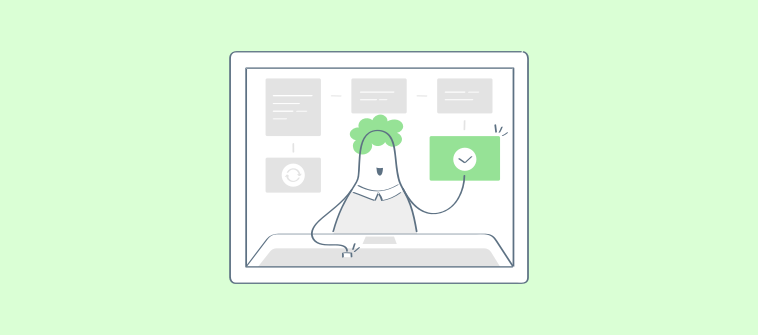
It is common for customer-facing departments like Marketing and Sales to base their strategies and decisions on a well-designed funnel.
But, does your job end there? What about the time when a lead finally converts into a customer?
That’s when you need a customer support funnel.
While the marketing and sales funnel guides prospects to become customers, it takes a well-optimized customer support funnel to take your hard-earned customers down the loyalty path. It helps you provide personalized support to customers across all stages and deliver relevant solutions specific to their unique needs.
So, whether your goal is to enhance customer experience, customer retention, or customer loyalty, a support funnel holds the right solution.
In this blog, we will learn about the benefits of a customer service funnel, explore the role of a self-service help center in the funnel and learn how to build a funnel for your customer support.
Let’s get started.
What is a Customer Support Funnel?
A customer support funnel illustrates the journey of customers as they move from the initial stage of onboarding to the final stage of advocacy. The goal of a support funnel is to streamline the support process, helping you indulge in high-value interactions at every stage that direct customers towards the right solutions.
There are a total of four stages in a classic customer support funnel:
- Onboarding
- Post-sales support
- Customer Retention
- Advocacy
Unlike the sales funnel, a customer support funnel comes in a little later in the customer journey and is focused on providing customers with exceptional experiences that make them stick to your brand.
It starts from onboarding customers to your brand and providing them with the resources they need to be successful. Then, it moves on to supporting customers when they need you and forging strong relationships so that they go on to become your loyal brand advocates.
Why Do You Need a Customer Support Funnel?
Besides helping you keep track of a customer’s journey, a well-managed customer support funnel offers other astounding benefits, such as:
-
Retains Your Hard-Earned Customers
Customer retention is paramount if long-term growth is your goal. When customers continue to choose you over and over again, it reflects positively on your brand and even boosts your bottom line.
In fact, roughly 65% of a company’s revenue comes from its existing customers.
With a customer support funnel, you can easily identify the unique needs of your customers and take steps to proactively support them. This means you can connect with them before they take the pain to contact you. Doing these simple things right can be a huge help in reducing churn and building unbreakable relationships with customers.
-
Identify Upselling Opportunities
Upselling and cross-selling are typically considered a part of the sales process.
This might sound surprising, it is true that even customer support teams can use the support funnel to find upselling opportunities. They can track the customer journey to indulge in high-value interactions. Just when customers are having a great time receiving support, agents can subtly inform them about products that will provide them even more value.
For example, while interacting with customers on live chat or resolving a ticket via email, you can look at their shopping records and recommend a complementary product or service for a better experience.
-
Spreads Positivity About Your Brand
When customers become brand influencers, you get free advertising without spending a single penny. That’s how powerful excellent customer support can be.
With a customer support funnel, you have all crucial information up your sleeve, so you can offer impeccable experiences to customers on their favorite channels – live chat, phone, social media, or even self-service.
The more happy customers are with your services, the more likely they are to share positive reviews online and recommend your brand in their social circle. This is how you get a strong network of influencers who are ready to sing praises about your brand and get you more business at no additional cost.
-
Build Lasting Relationships
For customer relationships to be strong, there should be meaningful, value-adding interactions at each touchpoint.
Using a well-defined customer support funnel, you can easily contact customers before they come to you and offer timely help for the problems they are facing. Once you help them resolve their ongoing issues, you naturally help them move forward in the support funnel.
This is just an example. No matter the stage a customer is in, the support funnel empowers you to hold meaningful and contextual conversations that help them be more successful with your products and services.
This success further leads to loyalty and strong relationships that stand the test of time.
The Different Stages of a Customer Support Funnel
Ideally, a customer support funnel has four stages that take place during the post-purchase phase. Each of the stages mentioned below is geared towards helping customers make the most of your products and become brand loyalists over time.
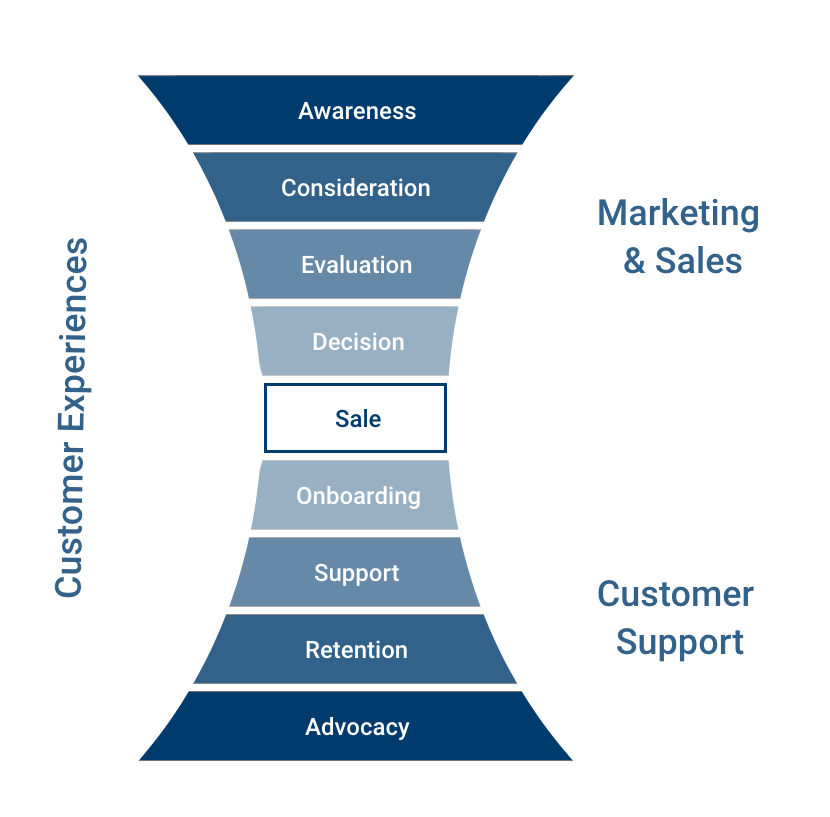
Stage 1: Onboarding
As the first stage that comes right after a sale is made, customer onboarding is powerful enough to make or break the customer experience. This stage introduces customers to your product and shows what it feels like to be a part of your brand. A little something goes wrong here, and the entire customer journey gets jeopardized.
This is the time when you need to give your best shot at familiarizing customers with your products and doing everything possible to fulfill the promises you made.
Failure to do so can result in customers abandoning you in the first 90 days itself. Research shows that poor onboarding is one of the biggest reasons 52% of the customers churn.
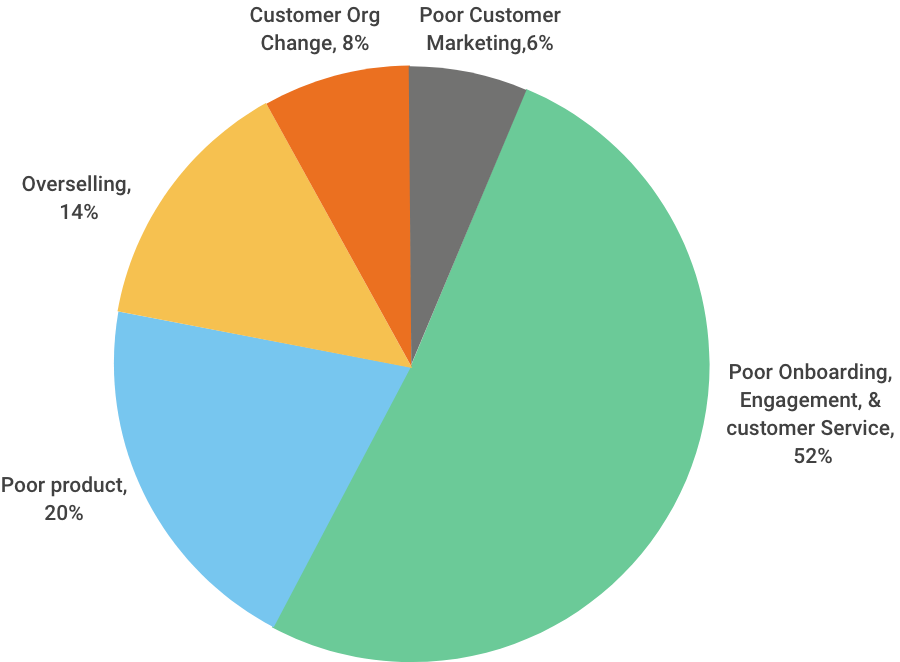
Your onboarding program should aim not only at product user success but also at providing long-term value to customers.
Show what makes your product really unique and how customers can put it to maximum use. Customers want convenience, so provide them with a self-service help center with how-to guides and getting started videos that help them get acquainted with the product. In addition to this, remember to take feedback from customers at every step during the onboarding process to improve their experience.
Stage 2: Post-Purchase Support
Next comes the post-purchase stage, where customers actually start putting all they have learned during onboarding into action. This is the time when they take their first steps and begin to use your product.
Post-purchase is a critical stage in the customer experience funnel where you need to indulge in high-value interactions steered towards customer delight. Your support agents need to be always on their toes as customers might raise tickets, ask questions, and shoot emails every time they get stuck.
Swift and seamless support is all customers need. Depending on the channel in use and the complexity of customer issues, your agents should be able to deliver accurate solutions while ensuring a reasonable resolution time.
For example, while some basic tickets can be instantly resolved via canned responses, the complex ones might take some time. In that case, it’s always best to inform customers about the same.
Stage 3: Customer Retention
Right after customers get comfortable using your product, it’s time to take steps to retain them.
This is the customer retention stage, where your agents have to proactively connect and engage with customers before they come to you for assistance. The idea is to reach out to them with the right solutions before they reach out to you with the problem. It is also about informing them of best practices, giving them the latest updates on what’s coming up.
The goal of this stage of the customer support funnel is to achieve loyal customers who never stop buying from you!
If you put up a good show in the onboarding and post-purchase stage, customer retention shouldn’t be that difficult.
You may consider tapping into popular social media platforms to engage with customers. Keep in regular touch with customers and update them about your upcoming launches, discounts, etc. You can even create online FAQs and add a knowledge base to your website to promote self-service.
Stage 4: Advocacy
This is the final stage of the customer support process, where you watch customers becoming your biggest advocates, ready to praise your brand, recommend products, and give 5-star reviews.
All the hard work you put into the onboarding, post-purchase, and retention finally bears the fruits in the Advocacy stage.
While some customers leave you in the initial stages itself, only a few reach up till Advocacy. These are those customers who have been with you for long, through thick and thin, and want to carry the association forward. They are so delighted with your brand that they do not hesitate to spread positive word of mouth, that too, free of cost.
Take this stage as an opportunity to grow your business. Provide customers a platform, such as a community forum where they can discuss trends, ideas, experiences, and product hacks. Such a discussion space helps in communicating your brand value to potential customers as well.
In addition to this, you can even ask customers for referrals, product ratings, and reviews on social media to spread positivity about your brand.
How to Build a Customer Support Funnel
Building a customer support funnel that works for your business shouldn’t be left to assumptions and guesswork. Follow some strategies like the one given below, and you will find yourself in a much better position.
1. Provide Multiple Channels for Customer Communication
With the advent of the internet, communication is no longer limited to a physical store or traditional channels like email and phone calls. Customer communication has moved past that stage and now happens over multiple digital touchpoints such as social media, live chat, self-service, among others.
In fact, if we talk specifically about Millennials, 63% of them start their interactions online, according to Microsoft.
From buying a product to asking for assistance, digital channels are clearly proving helpful for customers who want convenience at every step.
For your multi-channel approach to work, start by identifying the channels customers love the most and improve your presence on those channels.
For example, if some customers prefer social media, some opt for live chat while others stick to self-service, you must incorporate all these channels in your customer support workflow. Once you have the channels in place, integrate them together to provide customers with a seamless omnichannel experience.
2. Promote 24×7 Self-Service
Self-service has changed the game of customer service by bringing in more convenience and flexibility than ever before.
You’d be surprised to know that 66% of customers today prefer a self-service knowledge base for the sheer ease it offers.
Right from the first stage of customer support, i.e., onboarding, to other stages that follow, a self-service help center with up-to-date information is all customers need to solve problems coming their way without seeking expert assistance.
What’s even amazing about a self-service platform is that it can be easily accessed 24×7 via different devices, ensuring that customer support is not limited to a few hours or specific locations.
Your next step should be to create a knowledge base that is:
- Easy to navigate with important information displayed clearly
- Well-structured with articles presented in a systematic manner
- Engaging enough with concepts explained using images and videos
Keep your self-service top-notch if you want to keep your support tickets under control and keep your customers delighted forever!
Read More: Effective Tips to Promote Your Self-Service Platform Among Customers
3. Automate Customer Support With a Chatbot
Technological advancements are redefining the way companies support their customers.
One such technology that is taking the business world by storm is AI-powered chatbots. They are great for answering basic customer questions, such as:
- What is the price of X product?
- How do I use the X feature? and the like.
Chatbots use all your resources – help centers, FAQs, and websites, to extract relevant information and resolve customer issues at a lightning-fast speed. This makes them great for addressing basic and repetitive customer queries.
If, by any chance, chatbots fail to answer a customer’s question, that doesn’t mean it’s the end of the world. Chatbots are programmed to transfer the chat to the right agent for a quick resolution.
In addition to this, chatbots help you with a lot more, such as:
- Reduce the inflow of support tickets
- Give agents the time to focus on pressing issues
- Grow your leads and sales
- Deliver round-the-clock support to your customers
4. Manage Tickets Seamlessly in a Shared Inbox
Managing a massive number of tickets every day can hit your agents’ productivity hard. Not only that, the chances of serious issues going unnoticed increase in such instances.
Therefore, a systematic process to capture all support tickets, manage and track them is a prerequisite to ensure that most of your customers go down the support funnel smoothly.
With help desk software, you can bring all your tickets in a shared inbox where agents can manage, prioritize and track them from start to finish. It automatically routes tickets to the right agents and helps them figure out which ones are more important than others.
While all this is great, the hard part is measuring how your agents are performing and how happy customers are with the support.
Modern help desk tools come with a built-in AI-powered reporting system that offers meaningful insights into agent performance and customer satisfaction. The reports can be generated on a daily, weekly, or monthly basis, helping agents identify the bottlenecks on time and fix them before they turn into blunders.
5. Make it Easy for Customers to Reach You
Finally, what can really set you up for success is how easy and simple your support process is.
For your customers to go down the customer relationship funnel and reach the stage where they happily praise your brand, you need to go the extra mile by bringing simplicity in everything you do.
Whether it is self-service, live chat, ticketing, social media, or a simple phone call, customers should be able to reach you and get their problems solved with minimal effort.
The first thing you should do to simplify your support process is make your contact details, self-service help center, social media platforms, and even contact details are prominently visible on the website. No point in hiding them at the bottom of the page or in some little corner of the website, as it will only make it harder for customers to get the help they need.
As customers enter the onboarding stage, they not just need hand-holding but also convenience embedded at every step of the process, regardless of the channels they use.
For starters, you can use an in-app help widget that gives customers a tour of your product and helps them navigate through its features. Next, you can add a ticket form right inside your knowledge base, so customers do not have to wander around to raise an issue. Adding online FAQs to your website is another excellent way to solve the common questions customers might have.
Metrics to Measure the Performance of Your Customer Support Funnel
It’s now time to check whether or not the hard work you’ve put into building a customer support funnel is reaping you the rewards.
Here are some customer support metrics you can start tracking today to measure your customer support funnel’s performance.
1. Customer Satisfaction (CSAT) Score
Measuring customer satisfaction at every interaction point is critical for a successful customer support funnel. CSAT is a powerful metric that helps you assess how your support team is performing and how happy customers are with the support services.
After every interaction, you can share customer satisfaction surveys with customers and encourage them to give genuine feedback on your self-service, ticketing process, and agent interaction.
The ratings and the feedback customers provide will bring flaws in your support system to the surface so you can address them on time before things get out of control.
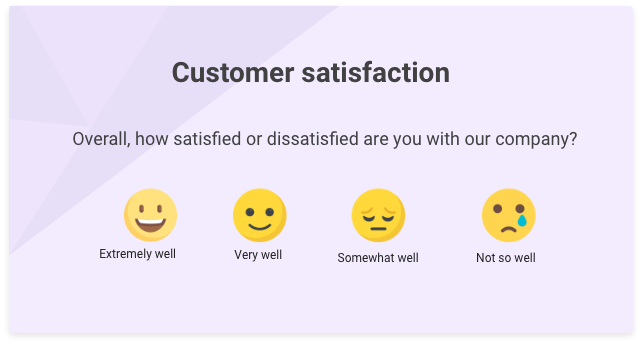
2. Net Promoter Score (NPS)
Another important customer support metric you should track regularly is Net Promoter Score, commonly referred to as NPS. It is a gold standard when it comes to customer experience and gives you a clear picture of how loyal customers are towards your brand.
It is a single-question survey that helps you identify your promoters, passives, and detractors. This is what it looks like.
NPS is a good performance metric to monitor customer satisfaction as they start moving down the funnel and progress towards the retention and advocacy stage.
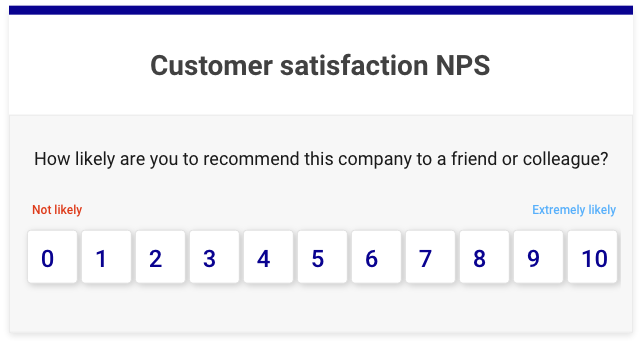
3. Customer Effort Score
While creating a customer support funnel strategy, remember to put extra focus on your Customer Effort Score. This score measures the amount of effort customers have to put in to contact you, get an issue addressed, or use your product. With this metric, your goal should always be to keep customer effort to a minimum.
CES clearly indicates how successful you have been in giving customers an easy time using your product and getting their requests fulfilled.
The easier customers find working with you from onboarding to the later stages, the longer they will stay and the more loyal they will turn out to be.
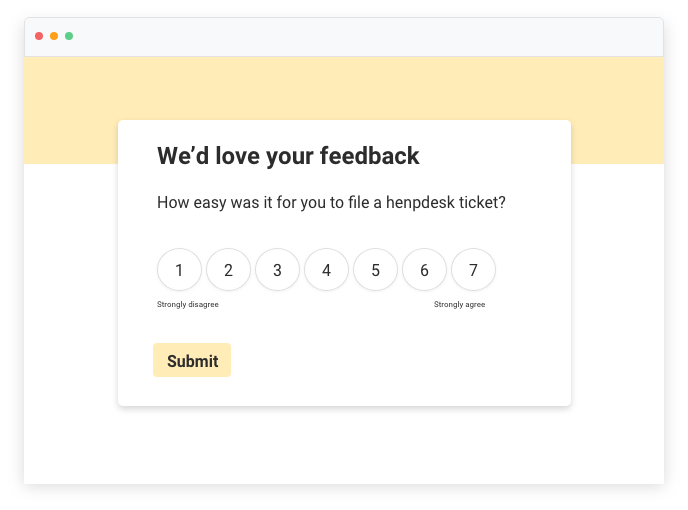
4. Customer Churn Rate
The success of your customer support funnel depends a lot on how many customers stick with you till the end. If you find a large number of customers churning in the initial stages, there is definitely a problem that you should identify and fix right away.
Customer churn is an important customer support metric that shows the number of customers you lose over a period of time. Here is a simple formula to measure this number:
(Customers at the beginning of a specific period – customers at the end of that period)/Total customers at the start of the time period) x 100
You can keep the customer churn in control by identifying the stage where it’s happening the most, finding reasons for the churn, and fixing them right away.
How to Optimize Your Customer Support Funnel
Now use the metrics that matter the most to optimize your customer support funnel.
Remember that a customer support funnel is not set in stone. Every business is different and has a unique set of customers. You can mold it to suit your specific business requirements.
There will be multiple touchpoints you may want to cover and different aspects of the experience you might want to monitor during the support process. Identify which performance metrics are most suitable for your target customers and track them at every stage. Based on the insights you receive, make practical decisions, and keep improving the experience at every stage of the customer support funnel.
For example, if your NPS score is not up to the mark, you know which stage you must target – the retention and advocacy stage. Go through the feedback given by customers in your NPS survey and devise a strategy to improve the experience and take your customers up the loyalty ladder.
Take Your Customers Down the Loyalty Path
There is one ultimate aim that every business wants to achieve with their customer support funnel: to take every customer down to the final loyalty stage.
A thoughtfully-designed customer support funnel strategy gives a strong foundation to not only onboard customers but also retain them for a long, long time. It exposes you to upselling opportunities, spreads positive word of mouth, and, most importantly, helps you forge lasting customer relationships.
And once you have a funnel ready, measure its success using metrics such as NPS, CSAT, CES, and customer churn. Tracking these metrics can bring useful insights to the surface and help you identify roadblocks well in time.
Create an effective customer support funnel and pull your customers up the loyalty ladder!
FREE. All Features. FOREVER!
Try our Forever FREE account with all premium features!






